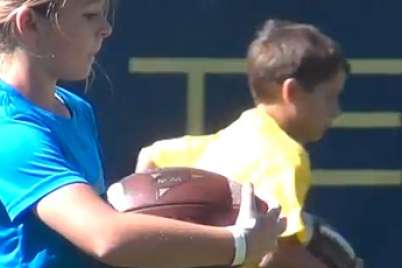
Recreation centre makes smart changes to increase kids’ activity
When you register your child for a physical activity program, you’re expecting that there will be plenty of movement and fun. The plain truth is that it doesn’t always work out that way.
Whether it’s gymnastics or hockey, dance or badminton, there are different ways to deliver practice and instruction in activity programs. Some clubs and programs do a better job of it than others. The best ones keep participants moving almost constantly — notwithstanding rest periods — while others often have kids standing in line waiting for their turn, or sitting down while they listen to excessive instructions.
Vivo, a charitable organization that operates the recreation centre in Calgary, is working hard to make sure kids in their programs are really moving, and that parents are getting value for dollars. Formerly known as Cardel Place, the centre has taken a hard look at their children’s physical activity programs in the past two years and tweaked things to make sure kids are getting quality physical activity. Their flagship effort is a novel multi-sport program called 4-in-1 Physical Literacy.
Intentional program design
The 4-in-1 Physical Literacy program is intentionally designed to engage kids in as many different physical activities as possible through the course of the sessions. It also includes increasing free play during each session, decreasing class management time, and providing more encouragement and praise when kids are being active.
“The program came about because of the Active Healthy Kids Canada report card and kids not getting enough activity,” explains Nadine Van Wyk, a professor at Mount Royal University who helped to review kids’ programming at the centre. “We began discussing what we could do with this national issue of kids not meeting the recommended physical activity guidelines every day, and we decided to look at our own programs.
“We started by offering an opportunity for kids in the north end of Calgary to have their motor proficiency tested. We gave them a physical assessment test — the Bruininks-Oseretsky Test of Motor Proficiency — and we compared them with other kids in Canada. We found they were about the same, so we asked the question, how would we make things better?”
Reviewing programming scientifically
Van Wyk and her team used a tool called the System for Observing Fitness Instruction Time, or SOFIT, to measure and evaluate the quality of their program delivery. SOFIT measures how physically active kids are during a program session, what they are doing for skills learning, and how the program leader provides instruction, guidance, and encouragement.
“We looked at a bunch of different programs, and we found that more often than not, kids were spending 61% of each hour standing. So we said here’s an opportunity to do things differently.”
The result was the 4-in-1 Physical Literacy program. It was designed and tested specifically as part of a study to determine what types of programming and instructional design would produce optimal activity levels and skill development.
“We invited a bunch of kids to participate and then we divided them into two groups,” says Van Wyk. “We had 30 kids in our regular programs as a control group and 30 kids in our specially designed intervention program. The control group participated in two different physical activities a week for four months, and the intervention kids participated in one month of gymnastics, one month of swimming, one month of skating, and one month of land-based activities.
“We did physical testing at the beginning, and we did systematic observation throughout, and we found at the end of four months that kids in the intervention group were not only more active in moderate-to-vigorous-physical activity during the program sessions, but their motor proficiency had increased in relation to the kids in the control group.”
Promoting best practices
From this result, Vivo decided to review all their instructor training to ensure that all staff would understand what best practices look like, making them aware of all the things they could do to increase physical activity in programs ranging from basketball and floor hockey to swimming, badminton, and climbing.
Vivo’s kaizen approach has produced results. Today, children in the 4-in-1 Physical Literacy program experience a broad variety of activities with one registration, and they receive a level of instructional attention that optimizes both their motor skill development and their enjoyment in being active. In short, it’s a model program for recreation centres everywhere, and an invitation for other activity programmers and sport administrators to take a deep look at how they deliver their programming.





